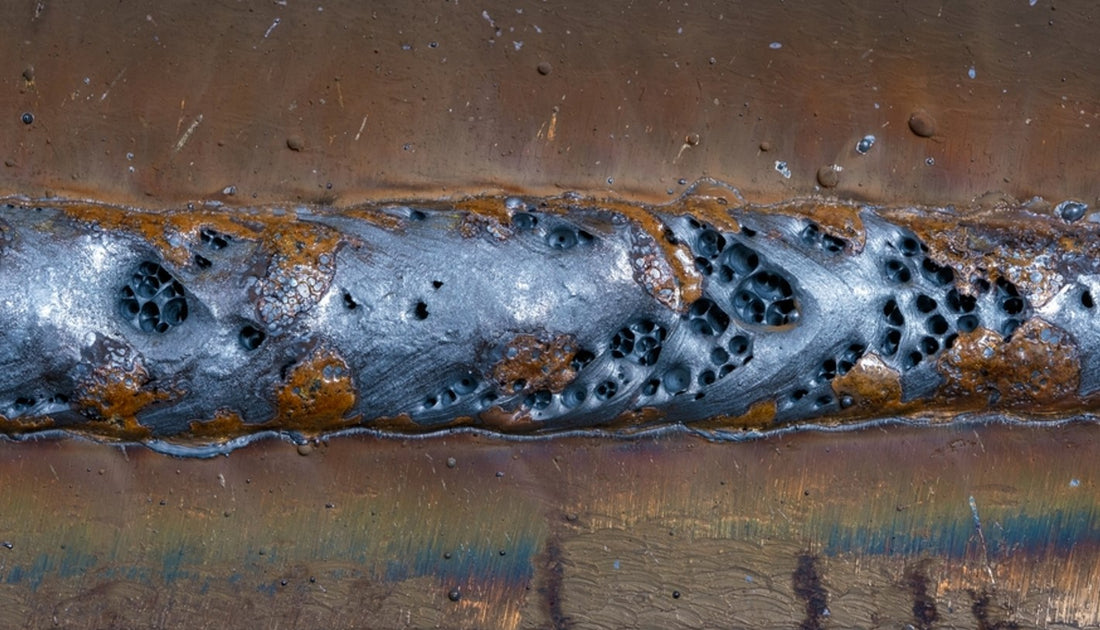Understanding Porosity in Welding: Discovering Causes, Results, and Avoidance Techniques
Porosity in welding is a persistent challenge that can considerably influence the top quality and integrity of welds. As professionals in the welding market are aware, understanding the reasons, effects, and avoidance methods related to porosity is critical for accomplishing robust and trustworthy welds. By delving right into the source of porosity, examining its detrimental effects on weld quality, and checking out effective prevention techniques, welders can improve their understanding and skills to produce top quality welds regularly. The detailed interplay of aspects contributing to porosity requires a comprehensive understanding and a positive approach to make certain effective welding results.
Usual Root Causes Of Porosity
Porosity in welding is primarily brought on by a combination of variables such as contamination, improper shielding, and insufficient gas protection throughout the welding procedure. Contamination, in the form of dust, grease, or rust on the welding surface area, creates gas pockets when heated up, causing porosity in the weld. Incorrect protecting occurs when the securing gas, frequently used in procedures like MIG and TIG welding, is incapable to totally shield the liquified weld pool from reacting with the bordering air, resulting in gas entrapment and subsequent porosity. Furthermore, insufficient gas protection, typically as a result of wrong flow prices or nozzle positioning, can leave parts of the weld unguarded, allowing porosity to create. These aspects collectively add to the development of spaces within the weld, weakening its stability and potentially triggering structural problems. Comprehending and resolving these common causes are critical action in stopping porosity and guaranteeing the top quality and toughness of welded joints.
Impacts on Weld Top Quality
The presence of porosity in a weld can significantly jeopardize the general high quality and stability of the welded joint. Porosity within a weld develops voids or cavities that deteriorate the structure, making it extra at risk to fracturing, deterioration, and mechanical failure. These spaces work as anxiety concentrators, minimizing the load-bearing capability of the weld and raising the likelihood of early failure under used tension. Additionally, porosity can likewise function as possible websites for hydrogen entrapment, additional exacerbating the deterioration of the weld's mechanical buildings.
Furthermore, porosity can hinder the effectiveness of non-destructive testing (NDT) methods, making it challenging to find various other issues or discontinuities within the weld. This can result in significant safety and security concerns, specifically in vital applications where the structural integrity of the welded components is paramount.

Avoidance Techniques Summary
Offered the harmful influence of porosity on weld top quality, efficient avoidance strategies are crucial to keeping look at this web-site the architectural stability of bonded joints. Among the key prevention techniques is complete cleaning of the base products before welding. Contaminants such as oil, oil, rust, and moisture can add to porosity, so making sure a clean work surface is necessary. Appropriate storage space of welding consumables in dry problems is also essential to protect against dampness absorption, which can cause gas entrapment during welding. In addition, picking the ideal welding specifications, such as voltage, current, and take a trip rate, can help reduce the danger of porosity development. Making certain appropriate securing gas circulation and protection is another essential avoidance technique, as not enough gas coverage can cause atmospheric contamination and porosity. Correct welder training and accreditation are necessary for applying preventative procedures successfully and constantly. By including these prevention strategies right into welding practices, the occurrence of porosity can be dramatically reduced, bring about stronger and more reputable welded joints.
Importance of Appropriate Shielding
Correct securing in welding plays an important function in stopping climatic contamination and making sure the integrity of bonded joints. Securing gases, such as argon, helium, or a blend of both, are generally used to protect the weld swimming pool from reacting with aspects in the air like oxygen and nitrogen. When these responsive elements enter call with the hot weld pool, they can create porosity, bring about weak welds with minimized mechanical properties.

Inadequate protecting can result in various defects like porosity, spatter, and oxidation, endangering the structural integrity of the bonded joint. Sticking to correct shielding techniques is crucial to generate high-grade welds with very little flaws and make sure the longevity and dependability of the welded parts.
Tracking and Control Techniques
Exactly how can welders properly monitor and regulate the welding procedure to make sure optimal outcomes and protect against issues like porosity? One key technique is via using advanced surveillance innovations. These can include real-time tracking systems that give responses on parameters such as voltage, present, take a trip speed, and gas circulation prices. By constantly checking these variables, welders can identify discrepancies from the ideal conditions and make prompt modifications to stop porosity development.

Furthermore, applying proper training programs for welders is crucial for checking and regulating the welding procedure effectively. What is Porosity. Enlightening welders on the significance of preserving regular parameters, such as appropriate gas protecting and travel speed, can aid stop porosity problems. Regular assessments and qualifications can additionally make sure that welders are proficient in tracking and managing welding procedures
In addition, using automated welding systems can boost monitoring and control abilities. These systems can specifically control welding criteria, minimizing the possibility this post of human error and making sure consistent weld high quality. By incorporating innovative monitoring innovations, training programs, and automated systems, welders can efficiently check and control the welding process to reduce porosity problems and achieve high-quality welds.
Verdict
